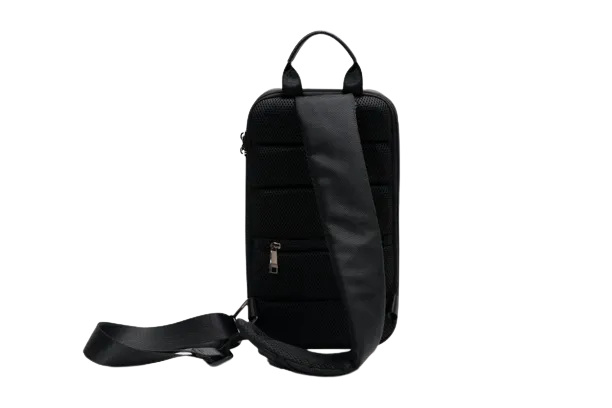How Do Backpacks with USB Charging Ports Work

For every backpacking enthusiast out there, a little wish to buy the much glamorous “USB backpacks” always exists. Currently, almost every good backpack comes with a built-in USB port. It then automatically gives rise to a question for the common people, how do backpacks with USB charging ports work?
In this article, we will give you a detailed guide on what exactly are USB ports, how they work in your backpack, and what things you should consider for safety and convenience.
College students must check out our guide on the best rolling backpack for college students (almost all have a built-in USB port)
Understanding USB Ports of a Backpack:
USB is a widely used device for transferring data between devices. Presently, it is predominantly used to charge your devices. When that same feature is added to your backpack, it makes it easier to charge your phone without having to take it out.
There are various types of backpacks with USB ports. Backpacks with a power supply (such as a battery) built in them, backpacks with just USB charging ports (these are the most common), and lastly, backpacks with a simple cable through them and the capacity to hold a separate charger.
Most backpacks such as Laptop bags, travel backpacks, anti-theft backpacks, etc. use these USB ports. (Read our article Best anti-theft backpacks to get your favorite anti-theft backpack.)
In terms of compatibility, there are type A, B, and C plugs that are compatible with selective ports. You must keep in mind to check whether the charging port for your device is compatible with the type of USB plug given to avoid any major inconvenience.
Components of Backpacks with USB Ports:
Depending on the type of backpack and USB port, there could be various components of a USB backpack. The main purpose of all kinds of arrangements and component parts is to help you keep walking while your device is being charged.
Typically, a backpack comes with a charging port, a charger, or a power bank (may or may not be included with the backpack but you will have to buy it) and a compartment pocket to keep the things secured.
It will have a space for the USB port to pass through so that you can keep your device in your hand. The power bank or charger is kept in a special pocket from where it can be taken out if you need to recharge it or wash the backpack.
Working Mechanism of Backpack’s USB Ports:

Whether you have a backpack with a built-in power bank/charger or need to buy one separately, you’ll need to follow some key steps to set up your USB port and then charge your device with it.
Setting Up the Charger:
This step requires you to either place the power bank into a compartment given in the backpack or in the mesh pocket of the backpack.
Connecting with the Backpack Port:
You simply need to connect the charging port inside the backpack with the charger.
Charging the Device:
The only thing left is to connect your device with the already set up port system and there you go; you can have a smooth adventure without any interruptions.
Basic Inner Working:
If you are curious about how a charging port works with a USB backpack, don’t worry we have got you covered there as well. The USB charging system of most of these backpacks simply appoints an internal wiring system that is built inside the backpack.
The wires connect the outer power source i.e., the battery or power bank to the inside cord. The cord is then connected to your mobile phones or other devices which then makes it possible for them to be charged.
Recharging the Power Supply:
Regardless of whether the backpack has a built-in power supply or you have to get a power bank yourself, the supply needs to be charged. There are various ways for it. In some backpacks, you have a wire that can be connected to a socket which in turn charges it.
In others you can take out the power supply can recharge it separately. In either case, the power supply is to be charged for some time which will then power your devices as you walk.
Safety Considerations:
We do understand that a USB backpack can be a highly efficient addition to your hiking or college gear but some necessary precautions are supposed to be taken with them as well. Here are three things to keep in mind when using a USB backpack.
1. Keep it Dry:
Make particularly sure that whenever you are using your backpack, it is not wet as it can cause damage to the wiring inside and can also potentially harm you.
2. Keep the Power Bank away From Extreme Heat:
We don’t have to emphasize the importance of keeping appliances cold, so bear that in mind.
3. Use Good Condition Cables/Devices:
This is the most important as your backpack and you will be kept safe if you use good condition wiring and devices.
Practical Applications and Benefits:

Looking cool is not the only reason people nowadays are preferring USB backpacks over normal ones. They also come with a lot of benefits and manage to make the trips much more efficient. Some of the better-known benefits of using USB backpacks are.
- You don’t have to stop at various places in case your phone battery is dead suddenly. They can charge them as you are moving about.
- In certain conditions, especially when you are traveling, it is highly difficult to find a suitable spot for your power bank or even if you find one, then unpack the backpack every time you need it to take it out. In such a scenario, USB backpacks can be highly convenient and practical as they enable rapid charging of your phones without having to disassemble your whole backpack.
- Having a secure USB backpack is not only convenient but it also is a potent safety net against theft again, due to the reason of not having to unpack the backpack every time.
- USB backpacks are often made from high-quality slash-resistant material due to the internal wiring. This is another potential benefit of buying a USB backpack over others.
Overall, a good USB backpack can improve your productivity no matter what you are using it for due to its efficient and quick design.
Tips for Using Backpacks with USB Ports:
Here are a few things that will make using USB backpacks much easier for you.
- Always check USB compatibility first as it will ensure you have the right backpack.
- Choosing a high-quality backpack is a better and more practical investment
- Use your own cables in the backpack to avoid any mishaps.
- Use high-quality cables instead of worn-out ones.
These tips will enable you to use your USB backpack with the highest efficiency!
Popular Backpacks with USB Ports:
With the knowledge of how a USB backpack works, we are sure you must be interested in buying one for yourself. It’s essential that you look for a backpack that suits your style and convenience and is compatible with your device. For best results here are the 3 most popular USB backpacks that you might like for yourself.
- FENRUIEN Business Travel Backpack BUY NOW
- MATEIN TRAVEL BACKPACK BUY NOW
- Muzee Business Backpack BUY NOW
Conclusion:
Now you are aware of how backpacks with USB charging ports work, as well as their importance and safety precautions. We believe you will be able to choose a good enough backpack for you and make your life easier using it.
If you are a hiking enthusiast and want more than a simple USB backpack, we also have the Best camera backpack under $100 for you to look at. Hope you find a good backpack and use it wisely.
FAQs:
Are USB-charging backpacks allowed on airplanes?
USB charging backpacks containing any lithium-ion battery are allowed on airplanes but should be packed as carry-on luggage.
How do portable chargers work?
Portable chargers simply need to be charged first and then they can be connected to the device by the USB port to be charged.
Can luggage have USB ports?
Many luggage bags such as travel pro do come with USB ports and can be bought easily. They make traveling much more convenient.


